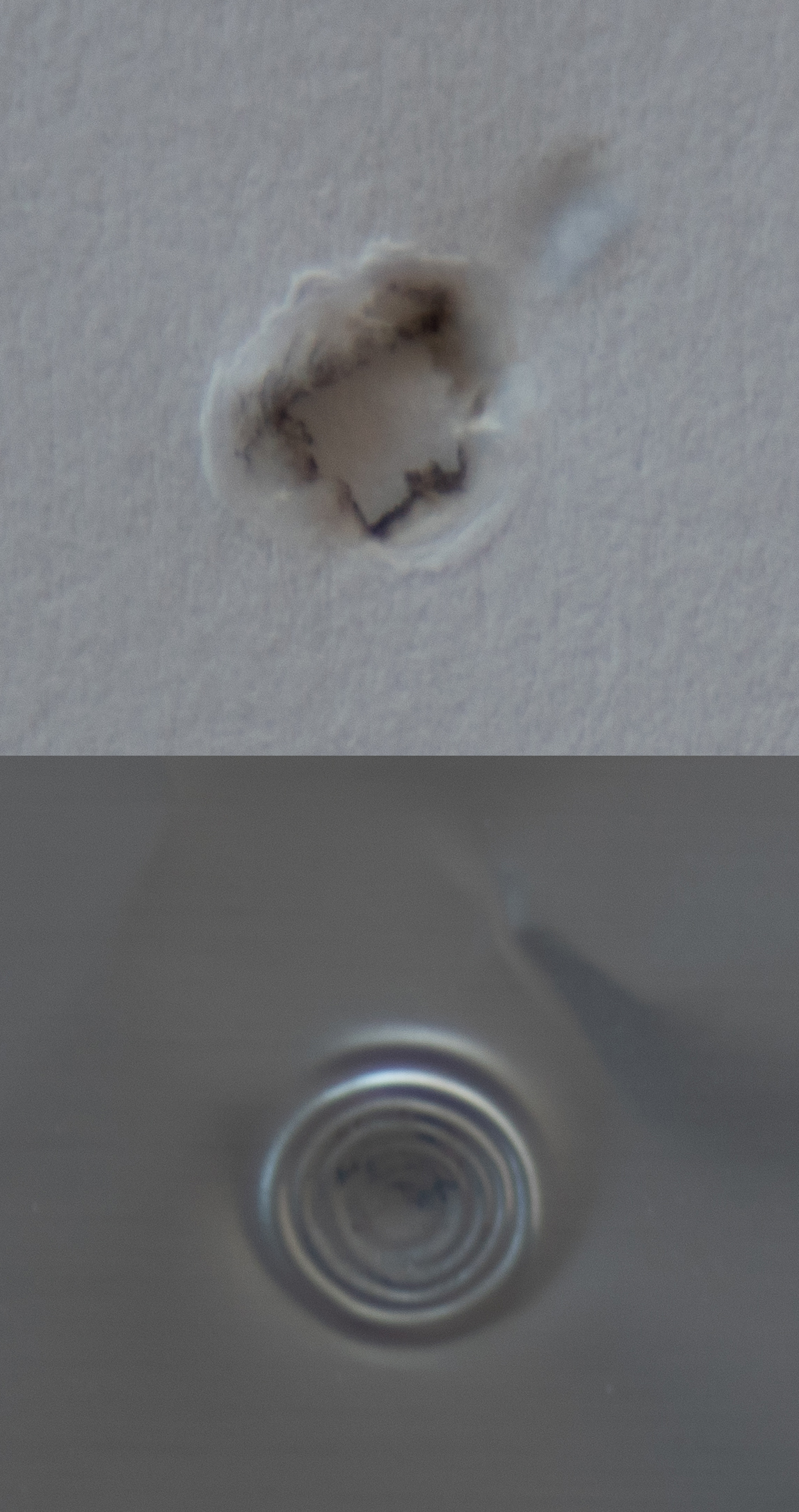19.7. Colliding balls#
Conversion of kinetic energy to heat
| Author: | Jelmer van Diepen |
| Time: | 5 minutes |
| Age group: | 12-14 |
| Concepts: | Heat, kinetic energy, energy conversion, shockwave |
Introduction#
The conversion of kinetic energy to heat is common. In this demonstration, you will see that the heat released when two metal balls strike each other leads to a sufficiently high temperature that can burn paper and deform aluminum foil.

Fig. 19.16 Situation just before impact.#
Materials Needed#
Two 500g steel balls with a diameter of 5 cm
A4 paper
Aluminum foil
Preparation#
None
Procedure#
As an introduction, strike the balls against each other without anything in between, at a speed similar to clapping. Where does the energy go that I constantly put in by moving back and forth? Students will likely mention sound; some may say that the energy disappears. Some students might also suggest that heat is generated. How could you prove that? There may be suggestions to measure the temperature of the steel balls, but that is very difficult. There is another way to plausibly demonstrate that heat is generated.
Ask someone to assist and hold the A4 paper vertically between the balls and strike the balls against each other (see Figure 19.16). You can choose to do this once or repeatedly in different spots on the paper. You will see small holes in the paper (see Figure 19.17 top). Ask the assistant to smell the paper. They will clearly perceive a burnt smell.
In the second part of the experiment, ask the assisting student to hold a sheet of aluminum foil vertically between the colliding balls. Using the same motion as in the first part, strike the metal balls against each other. At the point where the balls touch, a wave pattern can now be seen (Figure 19.17 bottom).

Fig. 19.17 Top: the resulting hole in the paper with a singed edge. Bottom: the wave pattern in aluminum foil.#
Physics background#
Kinetic energy is converted into heat. This often occurs in inelastic collisions, e.g. when a meteorite crashes onto the Earth’s surface. In the demonstration with paper, the heat is sufficient to reach the ignition temperature of paper and thus burn it. This combustion is only brief because the heat transfer to the surroundings is too small, due to the short duration of the collision.
The formation of the shockwave in the aluminum is somewhat more difficult to explain. The most commonly given explanation online is that the aluminum briefly melts due to the heat and immediately solidifies again. This way, the running wave created during the collision is essentially frozen.
The mass of the balls and the contact surface are of great importance here. If the mass is too small, there will not be enough kinetic energy to burn the paper or produce a noticeable wave. This is also the case if the contact surface is too large. In that case, the kinetic energy is converted into sufficient heat, but because the heat is distributed over too large a surface area, the ignition temperature is not reached.
Tip
To show that the small contact surface is essential, you can strike a hammer on a steel surface. This will not cause burning or a shockwave.
Follow-up#
It would be interesting to investigate whether the explanation for the observed wave pattern in the aluminum is indeed correct. Who can come up with an experiment and carry it out?
